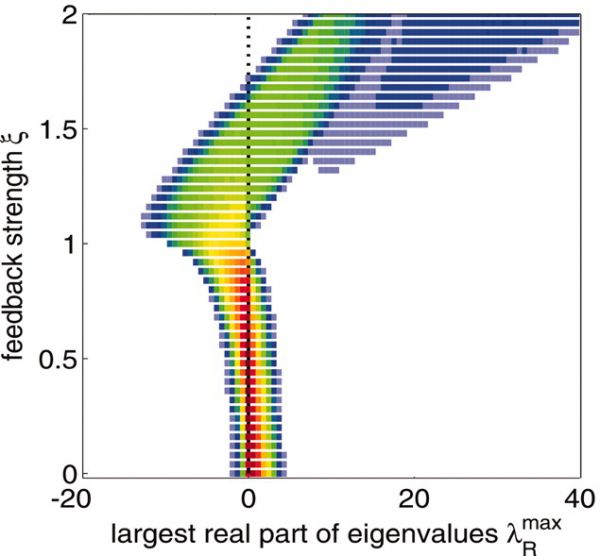steuer2006structural
Structural kinetic modeling of metabolic networks
R. Steuer, T. Gross, J. Selbig and B. Blasius
PNAS 103, 11868-11873, 2006
To develop and investigate detailed mathematical models of cellular metabolic processes is one of the primary challenges in systems biology. However, despite considerable advance in the topological analysis of metabolic networks, explicit kinetic modeling based on differential equations is still often severely hampered by inadequate knowledge of the enzyme-kinetic rate laws and their associated parameter values. Here we propose a method that aims to give a detailed and quantitative account of the dynamical capabilities of metabolic systems, without requiring any explicit information about the particular functional form of the rate equations. Our approach is based on constructing a local linear model at each point in parameter space, such that each element of the model is either directly experimentally accessible, or amenable to a straightforward biochemical interpretation. This ensemble of local linear models, encompassing all possible explicit kinetic models, then allows for a systematic statistical exploration of the comprehensive parameter space. The method is applied to two paradigmatic examples: The glycolytic pathway of yeast and a realistic-scale representation of the photosynthetic Calvin cycle.

Figure 1: The distribution of the largest real part of the eigenvalues as a function of the feedback strength. All other saturation parameters are sampled from a uniform distribution.